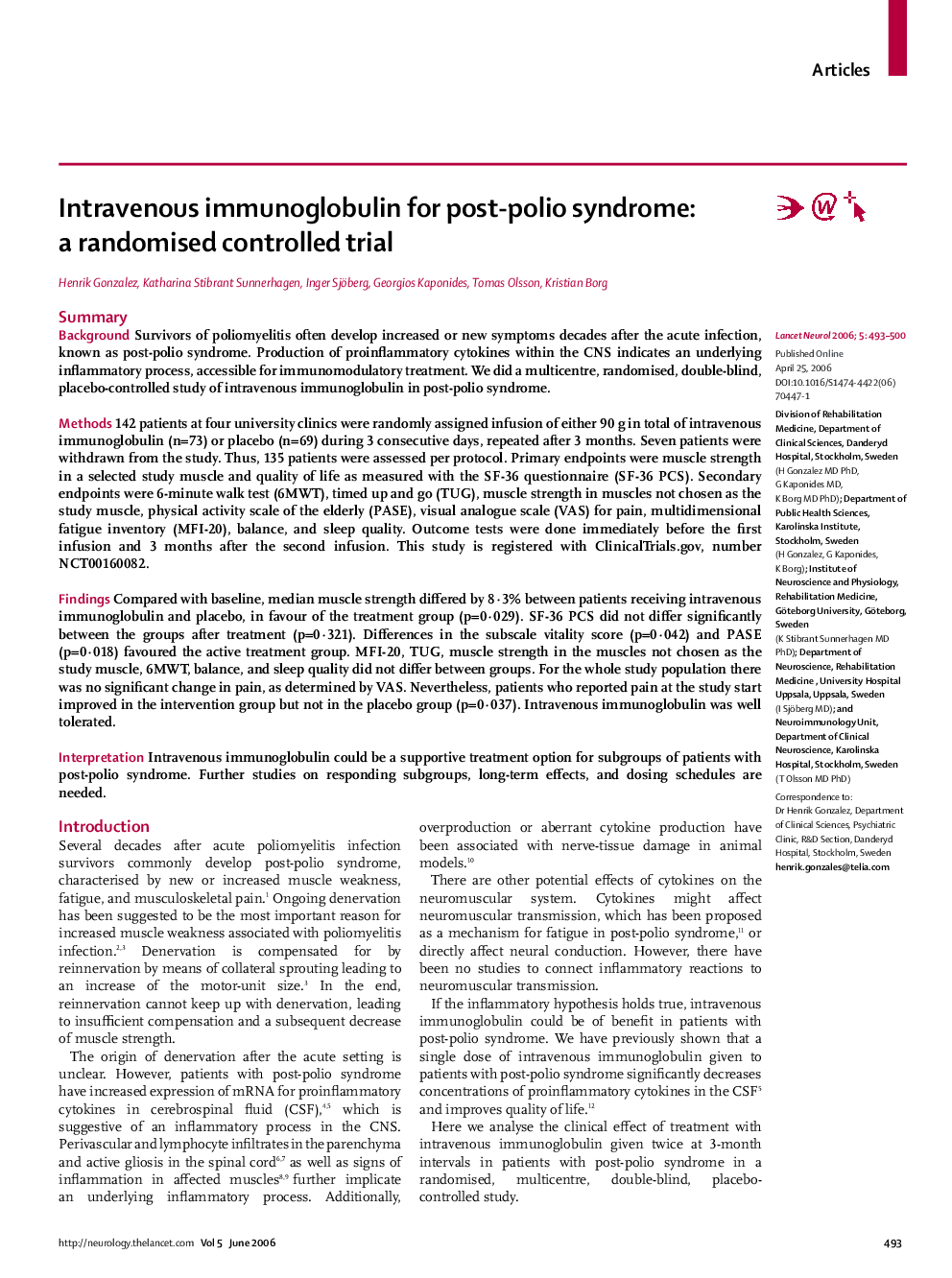| کد مقاله | کد نشریه | سال انتشار | مقاله انگلیسی | نسخه تمام متن |
|---|---|---|---|---|
| 3068188 | 1188202 | 2006 | 8 صفحه PDF | دانلود رایگان |

SummaryBackgroundSurvivors of poliomyelitis often develop increased or new symptoms decades after the acute infection, known as post-polio syndrome. Production of proinflammatory cytokines within the CNS indicates an underlying inflammatory process, accessible for immunomodulatory treatment. We did a multicentre, randomised, double-blind, placebo-controlled study of intravenous immunoglobulin in post-polio syndrome.Methods142 patients at four university clinics were randomly assigned infusion of either 90 g in total of intravenous immunoglobulin (n=73) or placebo (n=69) during 3 consecutive days, repeated after 3 months. Seven patients were withdrawn from the study. Thus, 135 patients were assessed per protocol. Primary endpoints were muscle strength in a selected study muscle and quality of life as measured with the SF-36 questionnaire (SF-36 PCS). Secondary endpoints were 6-minute walk test (6MWT), timed up and go (TUG), muscle strength in muscles not chosen as the study muscle, physical activity scale of the elderly (PASE), visual analogue scale (VAS) for pain, multidimensional fatigue inventory (MFI-20), balance, and sleep quality. Outcome tests were done immediately before the first infusion and 3 months after the second infusion. This study is registered with ClinicalTrials.gov, number NCT00160082.FindingsCompared with baseline, median muscle strength differed by 8·3% between patients receiving intravenous immunoglobulin and placebo, in favour of the treatment group (p=0·029). SF-36 PCS did not differ significantly between the groups after treatment (p=0·321). Differences in the subscale vitality score (p=0·042) and PASE (p=0·018) favoured the active treatment group. MFI-20, TUG, muscle strength in the muscles not chosen as the study muscle, 6MWT, balance, and sleep quality did not differ between groups. For the whole study population there was no significant change in pain, as determined by VAS. Nevertheless, patients who reported pain at the study start improved in the intervention group but not in the placebo group (p=0·037). Intravenous immunoglobulin was well tolerated.InterpretationIntravenous immunoglobulin could be a supportive treatment option for subgroups of patients with post-polio syndrome. Further studies on responding subgroups, long-term effects, and dosing schedules are needed.
Journal: - Volume 5, Issue 6, June 2006, Pages 493–500